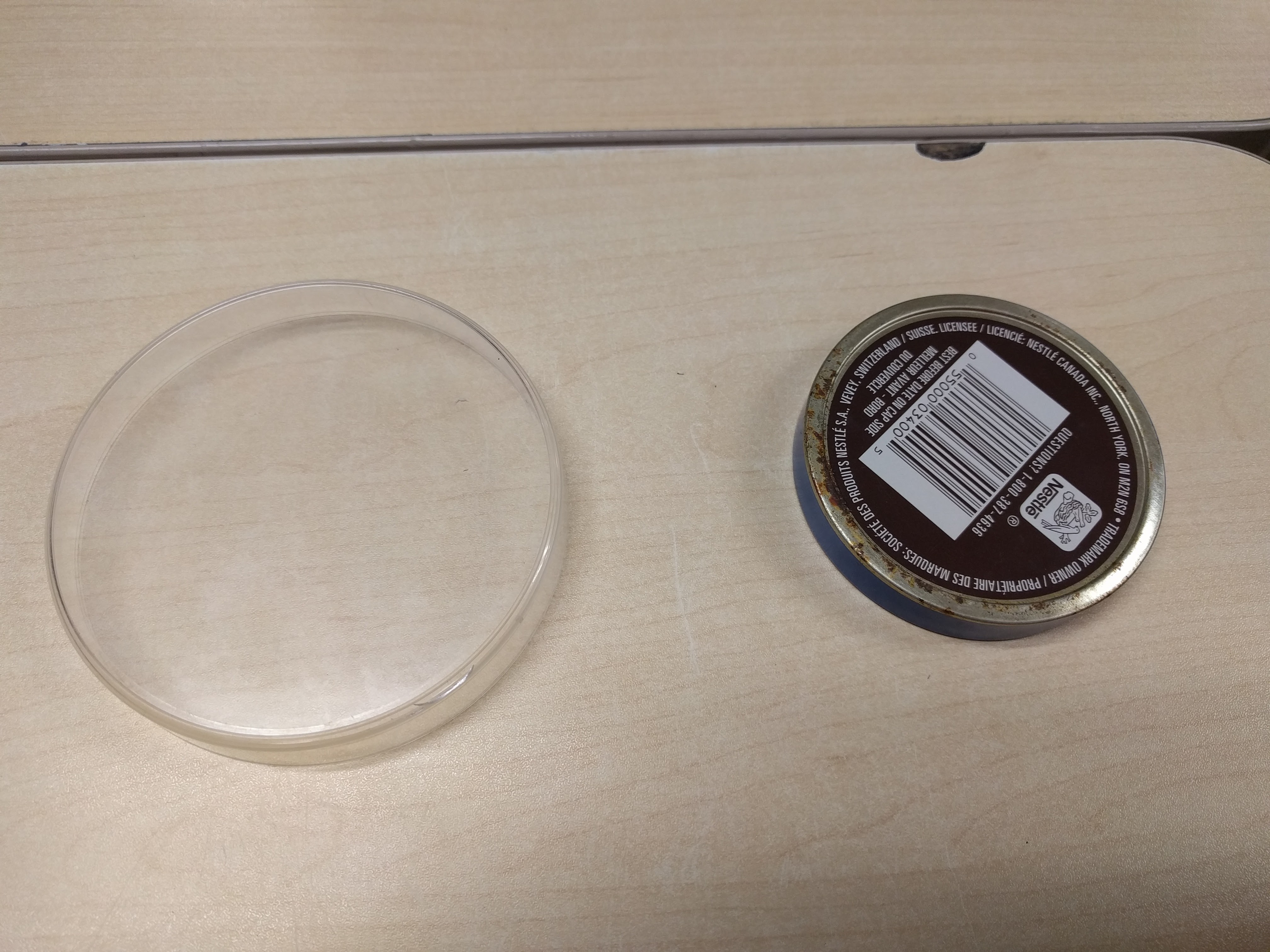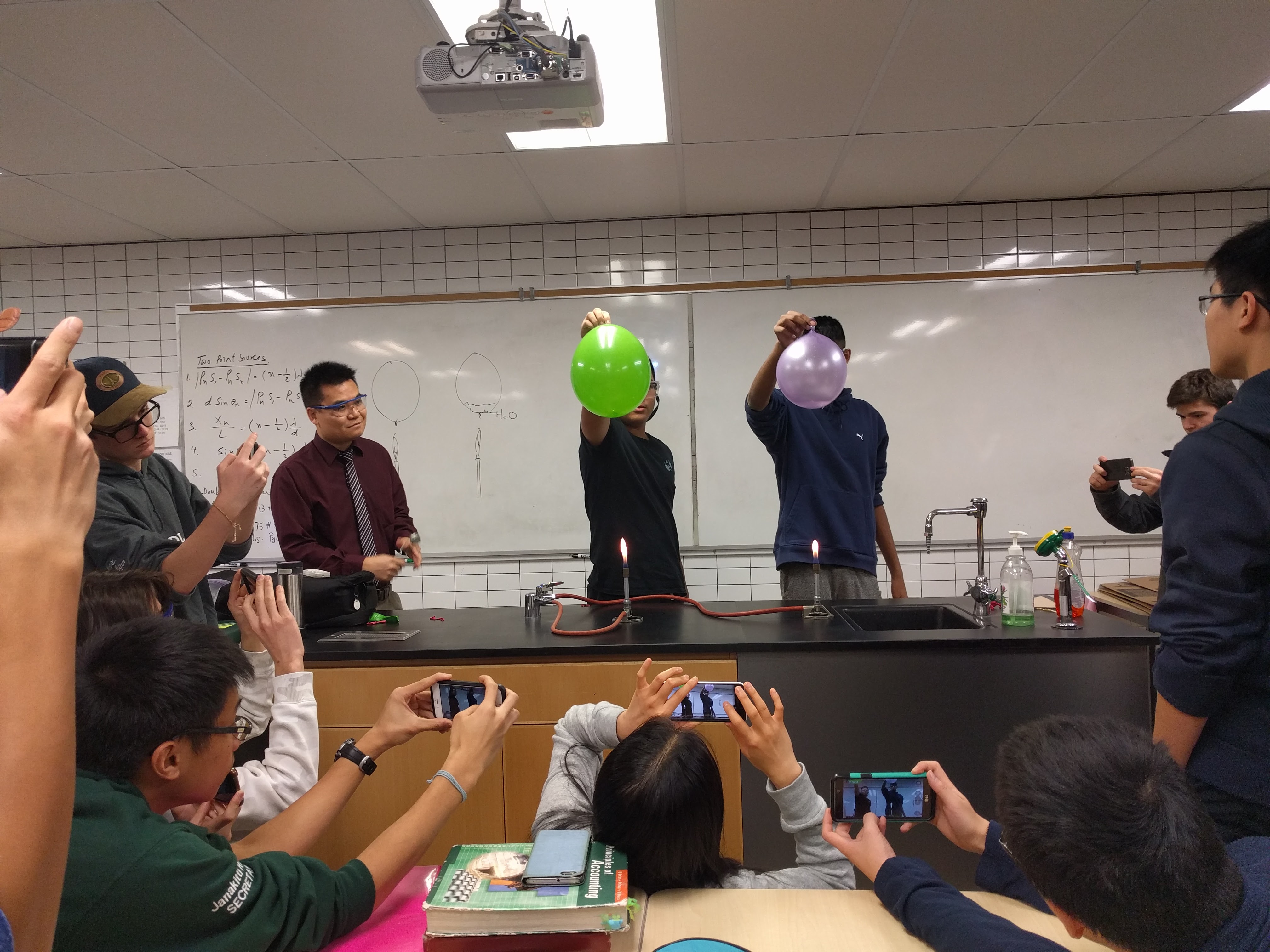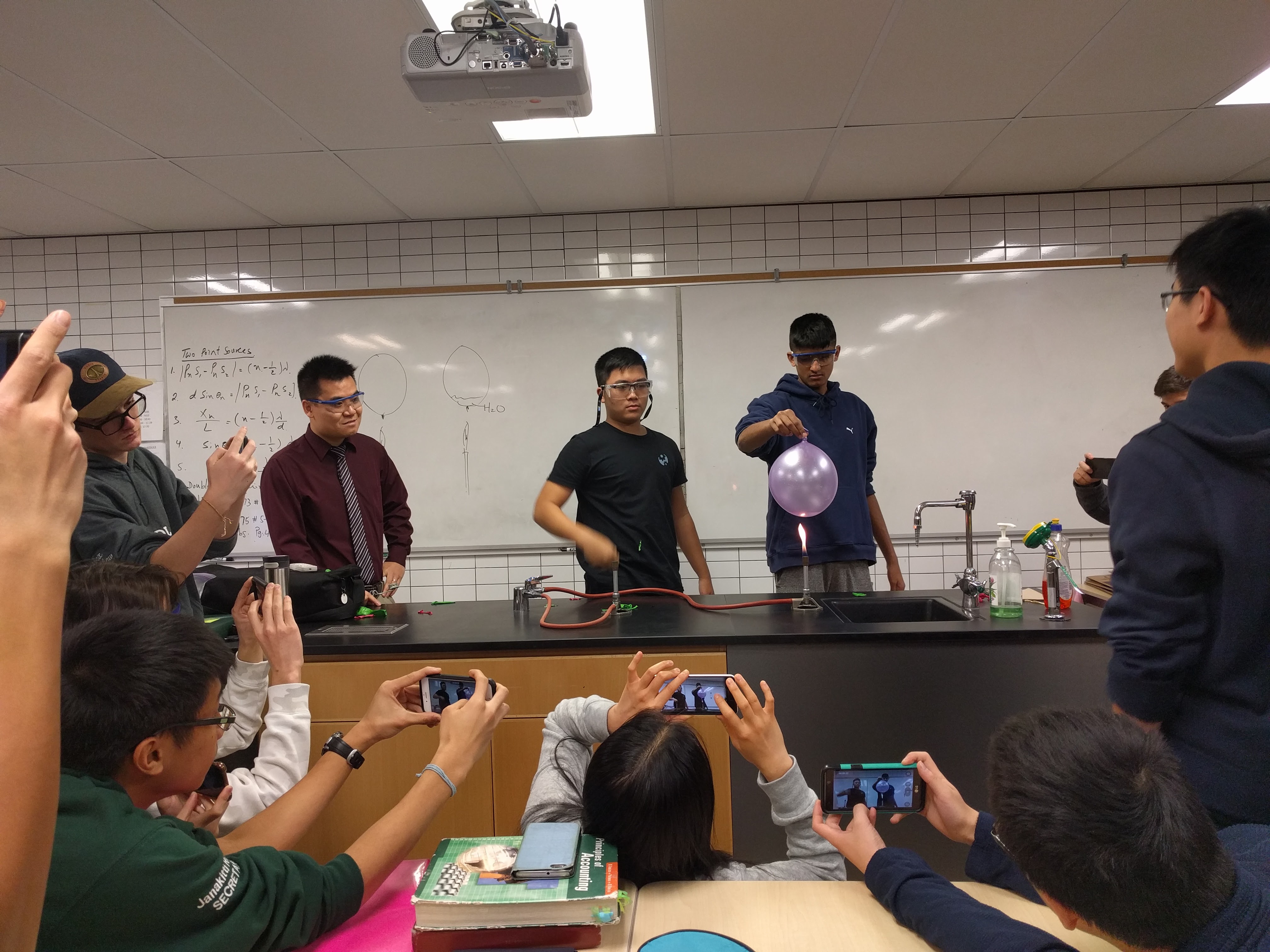Heat Transfer & Heat Capacity
We did two experiments today, and recorded our predictions, explanations, and observations.
Today I learned:

Which one is colder? The plastic dish or the metal lid?
Our hands cannot feel the temperature of an object. It can only feel the heat transfer of an object. For example, let’s say that a plastic object and a metal object are sitting on a table. When we touch it with our hands, the plastic object will feel warmer and the metal object will feel colder, even though if we check it with a infrared gun, the temperatures are the same. This is because the metal is better at heat transfer - it draws the heat away from our hand faster than the plastic, which is an insulator.
Objects also have different heat capacities. This is the amount of heat that an object can store. This was demonstrated today through the use of two balloons and two bunsen burners. One thing to note: water has a much higher heat capacity than air. The balloon without water popped first, as the air exanded much faster. The balloon with water remained unpopped for much longer. The water holds more heat, and expands less.


In the first picture, both balloons are being lowered to the fire. In the second picture, the balloon filled with air is popped, while the balloon filled with part water is still intact.
Some definitions:
- Specific Heat Capacity: amount of thermal energy added to raise temperature of one kg by one K Symbol: c
- Heat Capacity: Thermal energy needed to change temperature of body by one K. Symbol: C
There are equations to use for thermal energy transfer. First, Q = mct can be used to calculate for any of the values given 3 values. Q is thermal energy, m is mass, c is Specific heat capacity, and t is change in temperature. As well, Q = Ct, where Q is thermal energy, C is heat capacity, and t is change in temperature. The Csystem = m1c1 + m2c2 + m3c3 + … mncn,
Today I wondered:
How has the knowledge that metal in a room is the same temperature as plastic? In the past, we must have thought they were different, but how has this knowledge improved science/life?
What object will have a heat capacity greater than water? Does a vacuum have heat capacity at all?
Today I had an intriguing idea:
Something that I found intriguing was that ice would melt faster on cold aluminum than on warm plastic. This was shown in the veritasium video, and I found this quite interesting. Of course, now I know why - it’s because metal is a better heat conductor than plastic - but it’s fascinating. Again, physics is not common sense.
I had a wild idea too. If global warming is such a huge problem, there must be a way to capture and store large amounts of heat in materials with high heat capacities. Then, such materials could be sent off into outer space which could resolve the problem of global warming. Of course, this is very wild and does not consider any other problems (societal, economic, environmental), just that it could take heat away from earth.
After Unit Reflection
This post best connects to requirement #5h for heat transfer. In the previous post, transfer was discussed but in this post there is a great example. It shows that heat transfer is different from temperature. If something feels colder to our hands, it doesn’t necessarily mean the temperatuere is colder. It just means that it is transferring away heat from our hands faster. This is a common misconception, and it is one of the interesting things that I have learned in this class.